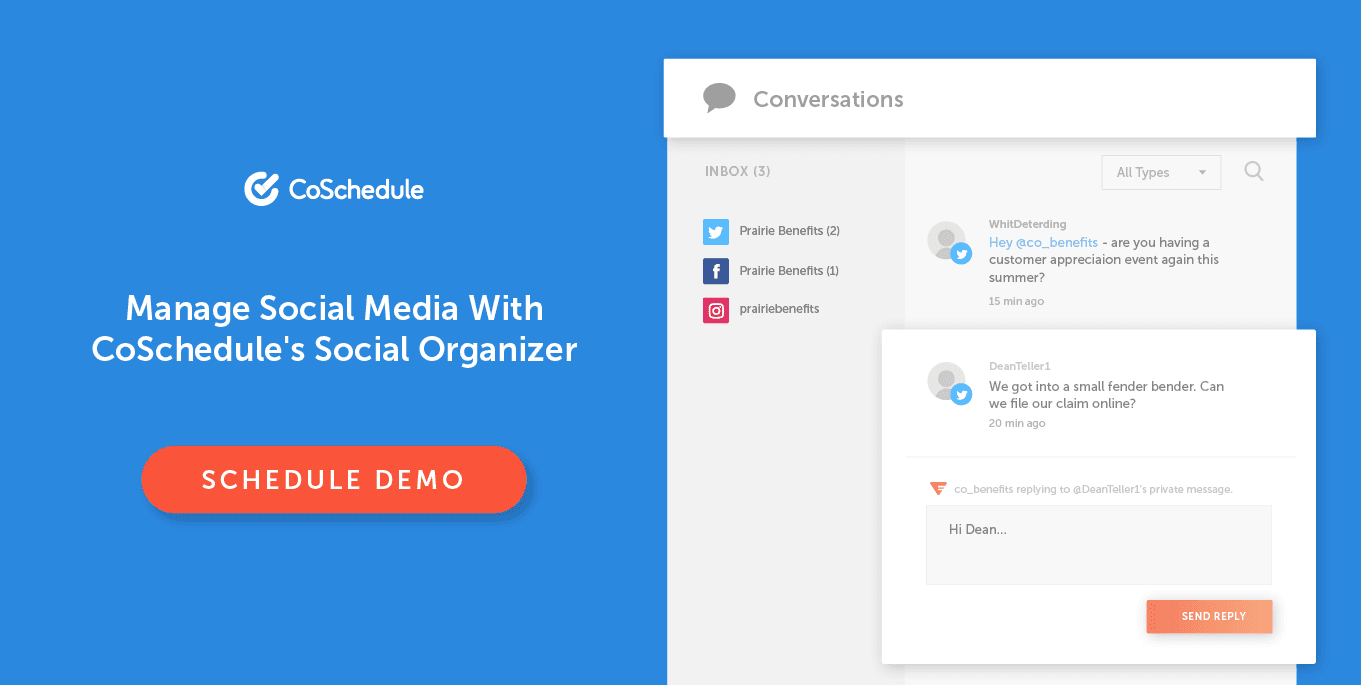3 Foolproof Ways to Use Negative Comments on Social Media to Boost Your Sales
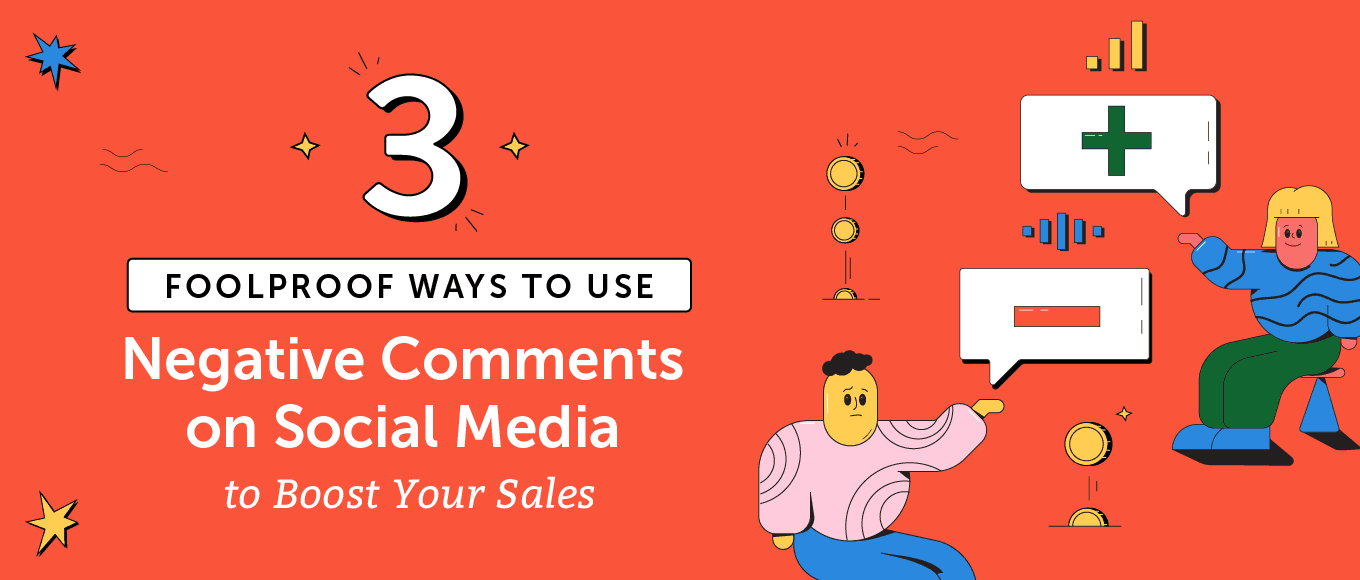 No one likes to be bad-mouthed.
Especially online on your social channels, where it’s out there in plain sight for all to read.
And when it comes to your business, negative comments could reflect poorly on your brand and, ultimately, cost you sales -- yikes.
Well, sort of.
If you don’t manage your negative comments on social media properly, then it could be bad news for your revenue stream.
But, if you respond the right way, you can turn those negative comments around and avoid having to manage a social media crisis. In fact, you can leverage them to boost your sales.
That’s right -- today, we’ve got three foolproof ways for you to use negative comments on social media to actually increase your sales.
Before we jump into those, though, let’s quickly cover why it’s important to manage the negative comments posted on your social channels.
No one likes to be bad-mouthed.
Especially online on your social channels, where it’s out there in plain sight for all to read.
And when it comes to your business, negative comments could reflect poorly on your brand and, ultimately, cost you sales -- yikes.
Well, sort of.
If you don’t manage your negative comments on social media properly, then it could be bad news for your revenue stream.
But, if you respond the right way, you can turn those negative comments around and avoid having to manage a social media crisis. In fact, you can leverage them to boost your sales.
That’s right -- today, we’ve got three foolproof ways for you to use negative comments on social media to actually increase your sales.
Before we jump into those, though, let’s quickly cover why it’s important to manage the negative comments posted on your social channels.
3 Foolproof Ways to Use Negative Comments on Social Media to Boost Your Sales
Click To TweetManage Your Negative Comments on Social Media With These Templates
Need to muster a quick response to a complaint or online snark? Use these fill-in-the-blank templates to craft clear responses to negative comments and deescalate the situation.Why is it Important to Manage Negative Comments on Social Media?
It’s important to manage negative comments on social media because chances are you’ll likely see more of them pop up. Social media is increasingly becoming the preferred channel for consumer complaints, making customer service inquiries the norm on social media. So much so that 47% of consumers use social media to complain about products and services, surpassing people who prefer to use email or phone.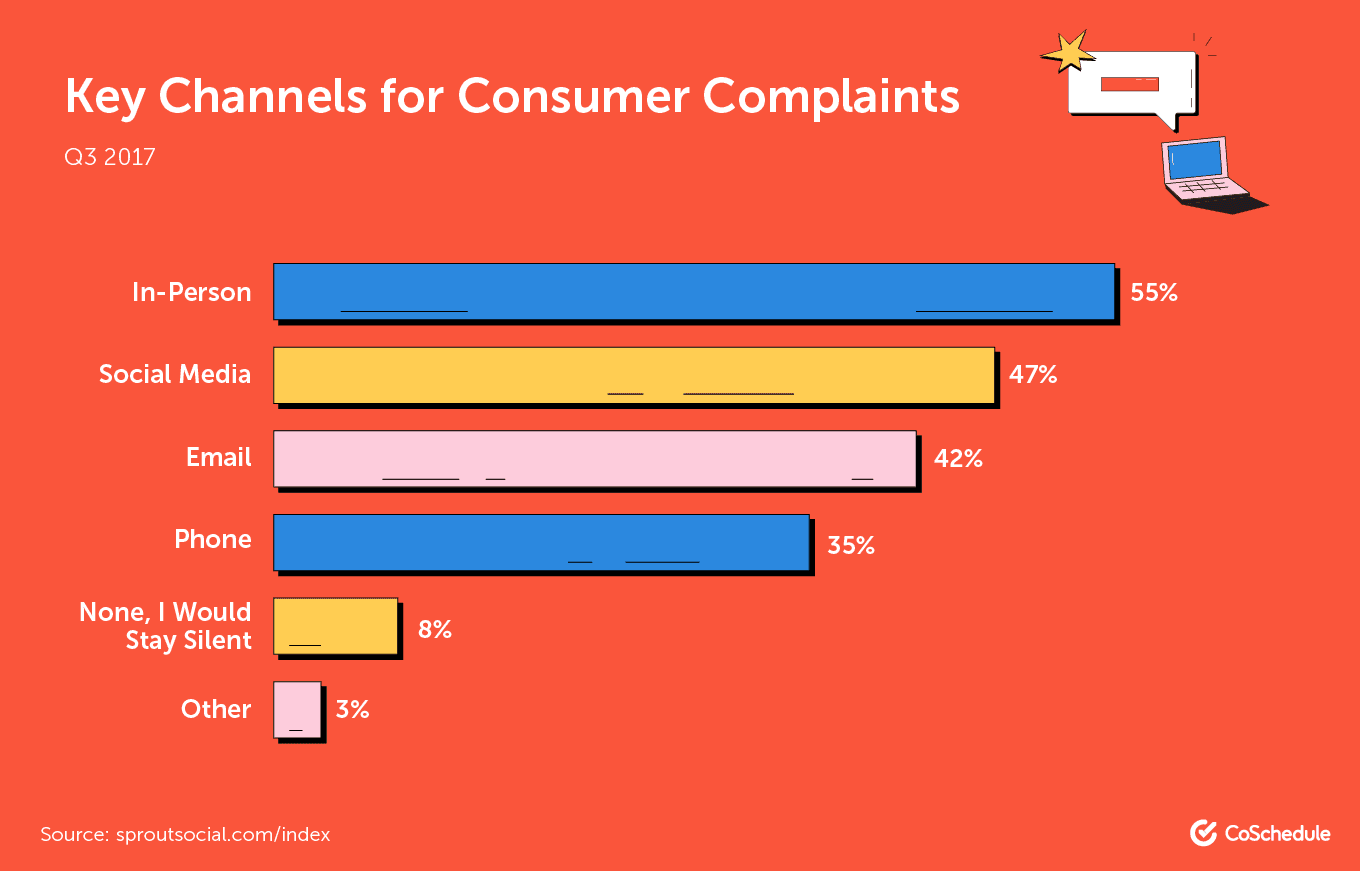 Image Source: Convince and Convert / Sprout Social
What’s more, resolving customer complaints using social media costs you less than using a call center. In fact, if you use a call center to sort out your consumer complains, it’ll cost you six times more than if you were to resolve them using your social channels.
Not only is it important to manage negative comments because you’ll likely see more consumer complaints posted on your social channels (and greater returns for answering them there), but you’ll also risk losing your customers if you ignore their comments.
Why? It makes for bad customer service -- something you want to avoid at all costs.
Poor customer service leads to a severe dip in your sales, and US businesses lose more than a staggering $62 billion each year because of poor customer service.
Plus, if your disgruntled commenter was planning on making a purchase from you and you present them with a bad service experience, they’ll likely drop their purchase plans. Over 50% of Americans have nixed their plans to purchase because of poor customer experience.
Image Source: Convince and Convert / Sprout Social
What’s more, resolving customer complaints using social media costs you less than using a call center. In fact, if you use a call center to sort out your consumer complains, it’ll cost you six times more than if you were to resolve them using your social channels.
Not only is it important to manage negative comments because you’ll likely see more consumer complaints posted on your social channels (and greater returns for answering them there), but you’ll also risk losing your customers if you ignore their comments.
Why? It makes for bad customer service -- something you want to avoid at all costs.
Poor customer service leads to a severe dip in your sales, and US businesses lose more than a staggering $62 billion each year because of poor customer service.
Plus, if your disgruntled commenter was planning on making a purchase from you and you present them with a bad service experience, they’ll likely drop their purchase plans. Over 50% of Americans have nixed their plans to purchase because of poor customer experience.
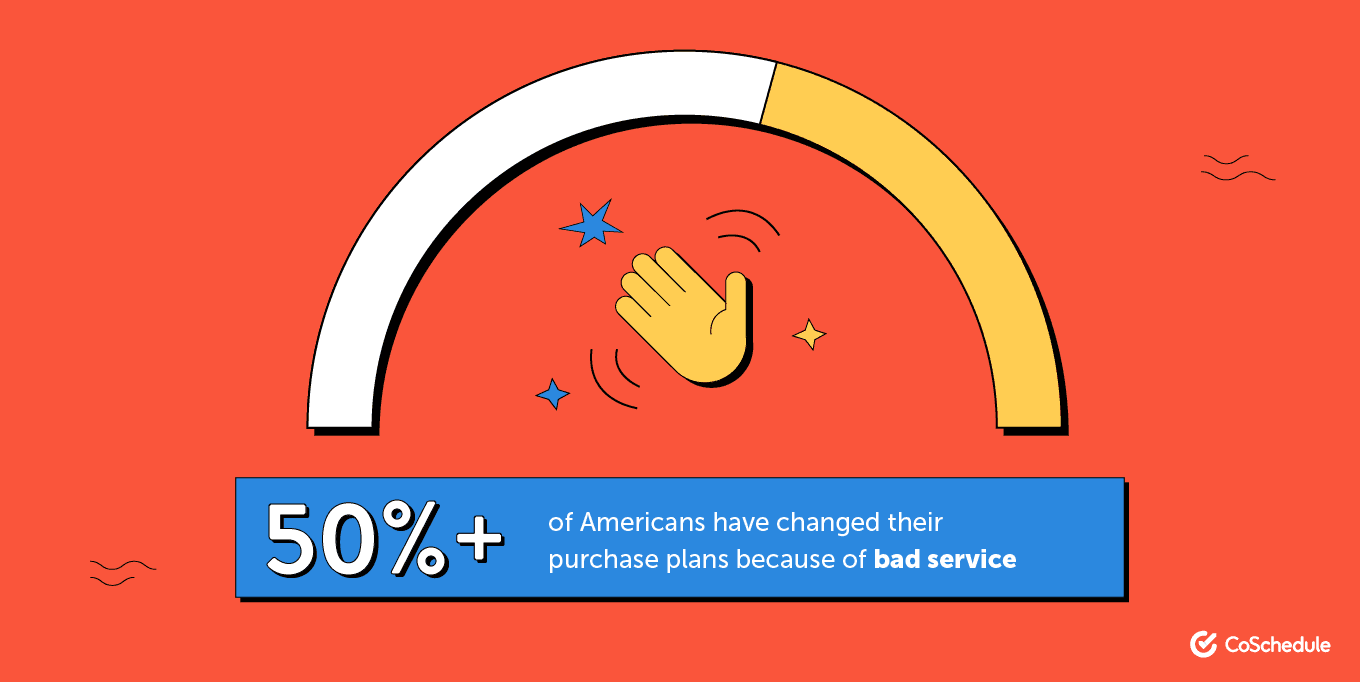 All this to say, managing negative comments on social media is vital to your business because:
All this to say, managing negative comments on social media is vital to your business because:
- Social platforms are becoming the preferred channel for customer complaints
- Providing a poor customer experience leads to a sharp decline in sales
How Can You Leverage Negative Comments on Social Media to Drive Sales?
You can use negative comments on social media to drive sales by increasing your brand's authenticity, a trait consumers crave from brands. So much so that 86% of people say authenticity is important when they decide what brands to like and support. If you’re looking for the generational breakdown, it matters most to millennials with a whopping 90% of them claiming authenticity is important when considering brands.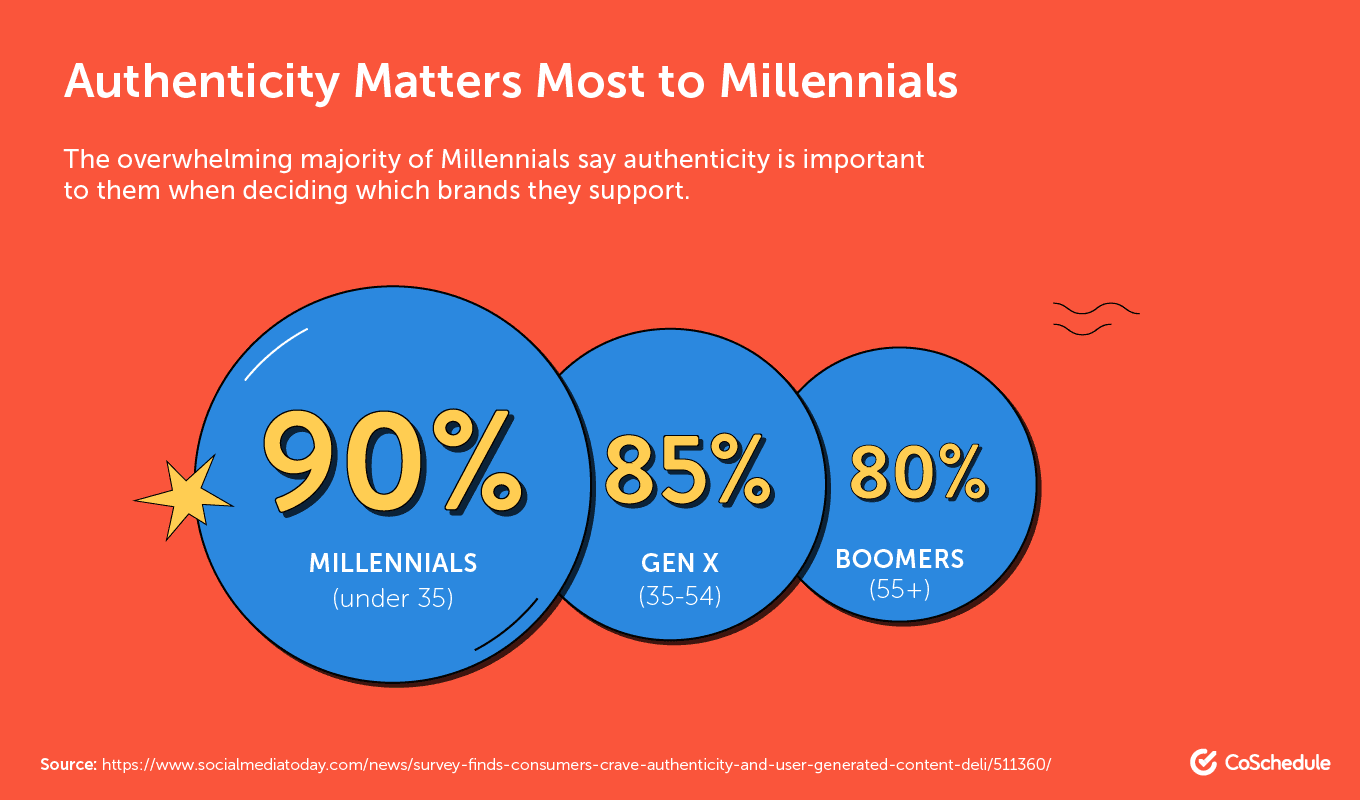 Source: Social Media Today
That’s not to say other generations don’t prioritize authenticity. 85% of gen-Xers and 80% of boomers say it’s a key factor when choosing brands, too.
So, how do negative comments play a role in your brand’s authenticity?
Believe it or not, by simply existing on your social channels, they add to your brand’s authenticity.
Here’s what I mean. 95% of people actually expect negative reviews on your site, and if they don’t see them, they suspect censorship or think your reviews are fabricated. What’s more, if you do have negative reviews, you may see an 85% increase in your site’s conversions.
In other words, it’s important not to delete your negative comments on your social channels because they can actually work in your favor.
When visitors to your social platforms see both negative and positive comments posted, the positive comments will be that much more credible, lifting your brand’s authenticity.
Of course, it isn’t enough to simply leave your negative comments published as-is. You need to manage them and respond to each one properly. And if you follow our three tips for you today, you can transform those negative social comments into sales.
Here’s how.
Source: Social Media Today
That’s not to say other generations don’t prioritize authenticity. 85% of gen-Xers and 80% of boomers say it’s a key factor when choosing brands, too.
So, how do negative comments play a role in your brand’s authenticity?
Believe it or not, by simply existing on your social channels, they add to your brand’s authenticity.
Here’s what I mean. 95% of people actually expect negative reviews on your site, and if they don’t see them, they suspect censorship or think your reviews are fabricated. What’s more, if you do have negative reviews, you may see an 85% increase in your site’s conversions.
In other words, it’s important not to delete your negative comments on your social channels because they can actually work in your favor.
When visitors to your social platforms see both negative and positive comments posted, the positive comments will be that much more credible, lifting your brand’s authenticity.
Of course, it isn’t enough to simply leave your negative comments published as-is. You need to manage them and respond to each one properly. And if you follow our three tips for you today, you can transform those negative social comments into sales.
Here’s how.
3 Ways to Use Negative Comments on Social Media to Increase Sales
#1. Respond to Negative Comments as Soon as Possible
The first and simplest rule of thumb to follow is to respond to your negative comments as quickly as you can. Doing so will reduce customer churn and turn your disgruntled customer sentiments around, so they make future purchases from your brand. If you think response time is a casual detail, think again. Each minute matters. In fact, people who receive responses to negative tweets within five minutes are willing to pay almost $20 more in the future.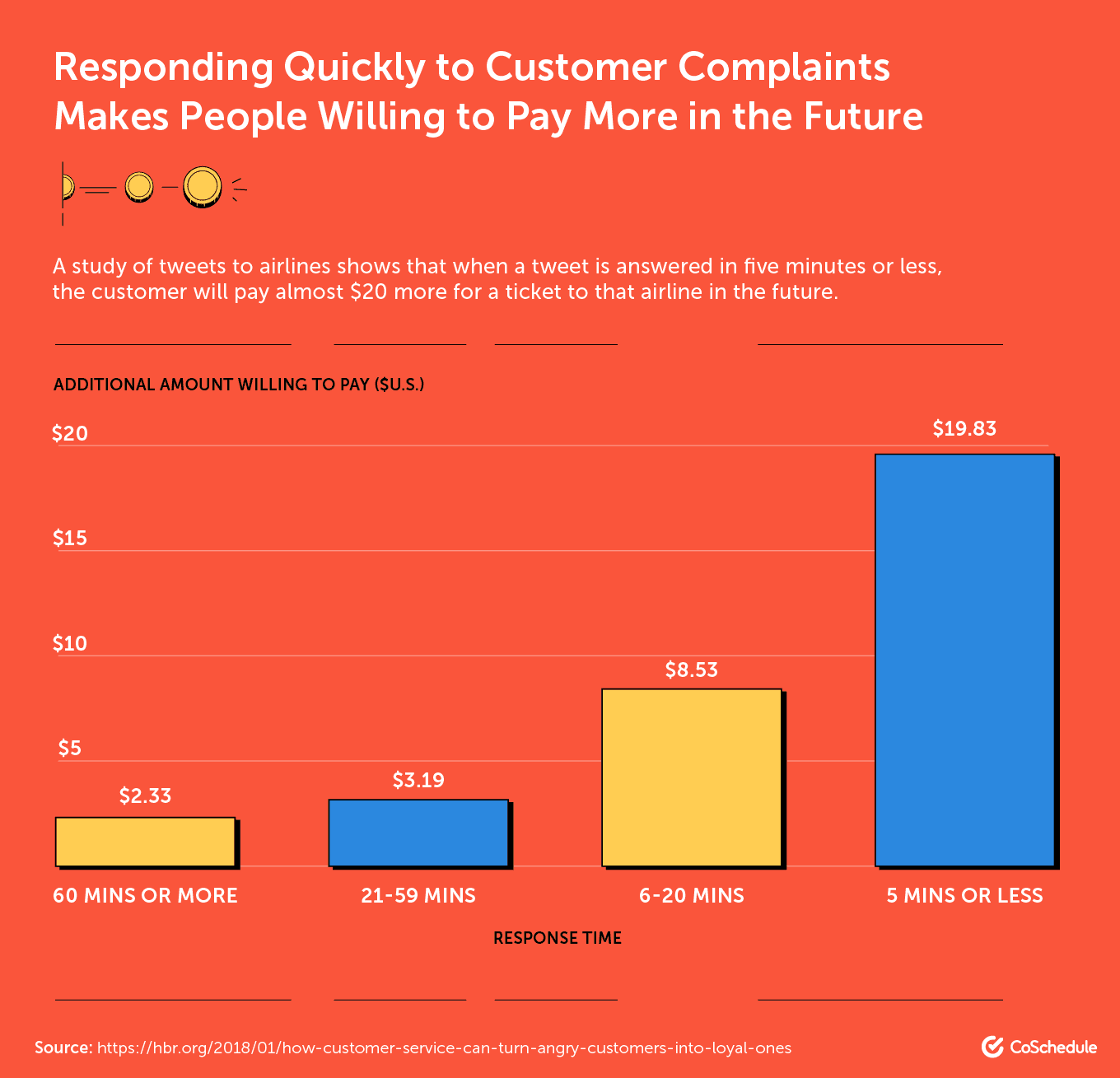 Image Source: Harvard Business Review
If you can’t respond in five minutes, strive for at least within 60 minutes, because 42% of customers expect a response within an hour and 32% expect to hear from you within half an hour.
In the same way that 78% of customers purchase from the first person who responds to a lead inquiry, be the first to respond to each negative comment.
To help you manage your social media responses in a timely manner -- without having to hire a social media manager -- social media management tools can do the trick, especially those with a social inbox.
Take CoSchedule, for example. There’s a “Social Conversations Inbox” feature that alerts you in real-time whenever you receive a comment on one of your channels.
Image Source: Harvard Business Review
If you can’t respond in five minutes, strive for at least within 60 minutes, because 42% of customers expect a response within an hour and 32% expect to hear from you within half an hour.
In the same way that 78% of customers purchase from the first person who responds to a lead inquiry, be the first to respond to each negative comment.
To help you manage your social media responses in a timely manner -- without having to hire a social media manager -- social media management tools can do the trick, especially those with a social inbox.
Take CoSchedule, for example. There’s a “Social Conversations Inbox” feature that alerts you in real-time whenever you receive a comment on one of your channels.
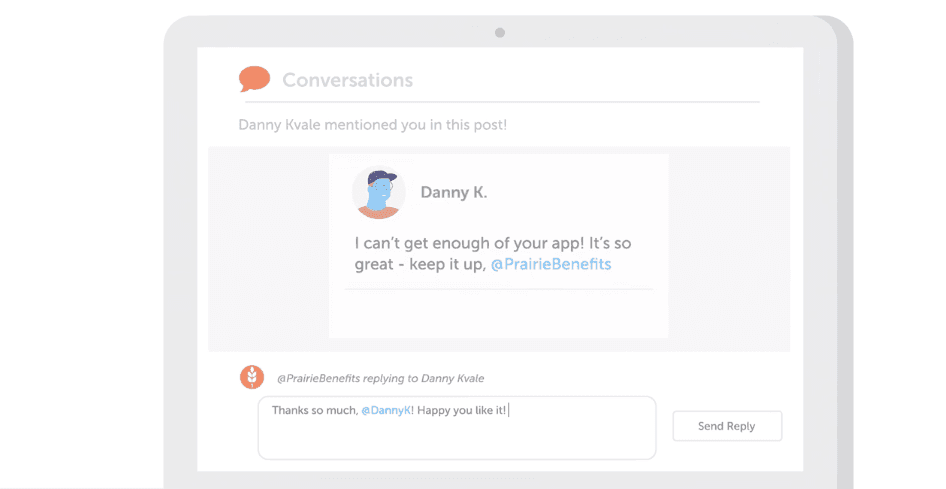 The main takeaway here is to respond as soon as you can and to shoot for resolving your customer’s issue at the first engagement. If you do, you can prevent a significant 67% of your customer churn.
Our next tip reveals what to say in your responses to negative social media comments.
The main takeaway here is to respond as soon as you can and to shoot for resolving your customer’s issue at the first engagement. If you do, you can prevent a significant 67% of your customer churn.
Our next tip reveals what to say in your responses to negative social media comments.
#2. Demonstrate Your Great Customer Experience in Your Response
Another effective way to leverage negative comments on social media to boost your sales is to use them as a chance to demonstrate your excellent customer service. If you’re wondering how powerful this can be, the answer is: very. 89% of brands compete with each other through the customer experience they deliver, so be sure yours is excellent as you publicly respond to your social comments. How exactly can you demonstrate your customer service level? At a minimum, offer an apology in your response. Most consumers call out brands on social media to raise awareness among other customers, and 55% do it for an apology, so it’s best to give them what they’re looking for.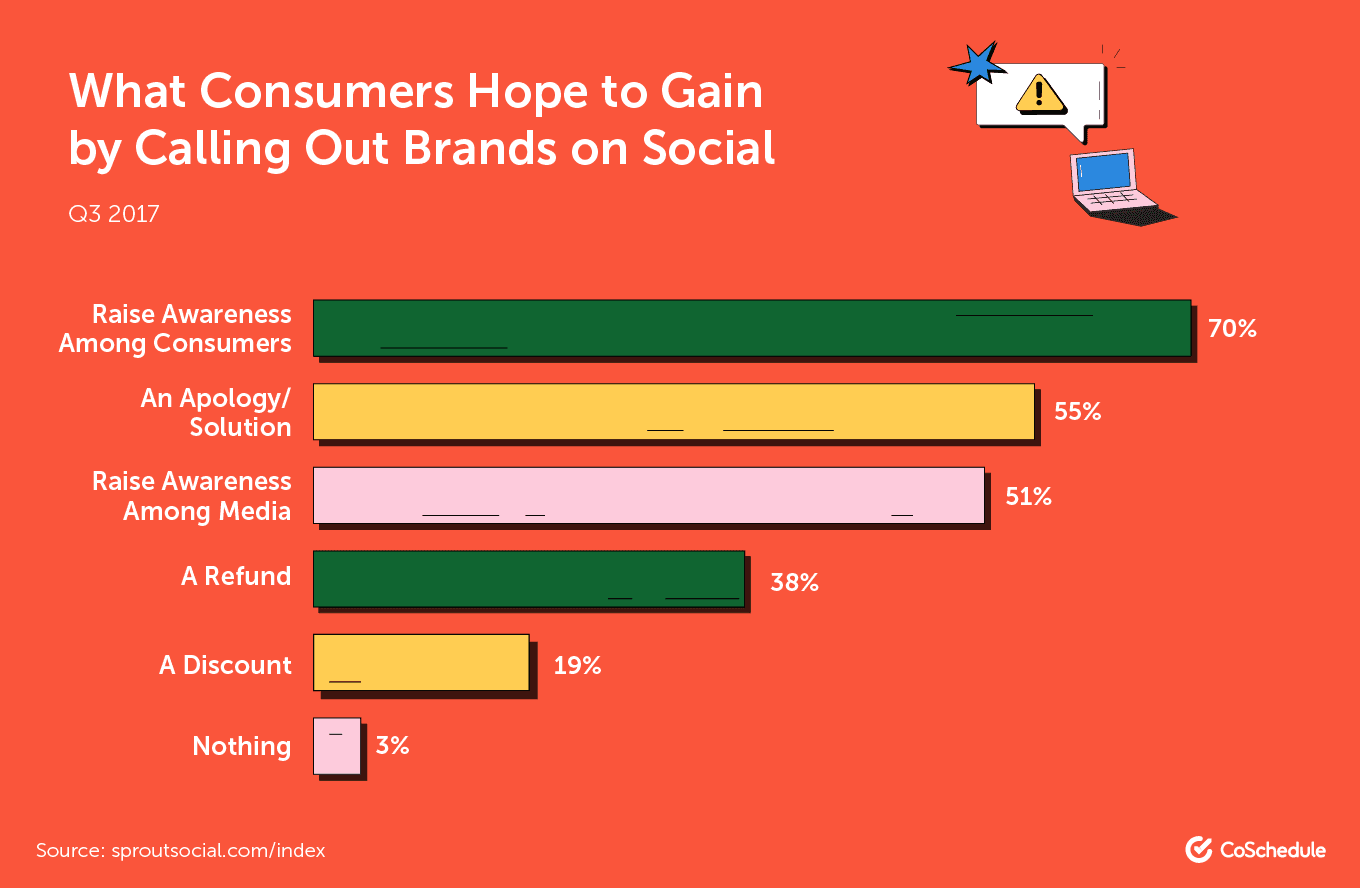 Image Source: Convince and Convert / Sprout Social
An apology is so vital, more unhappy customers (45%) prefer an apology than compensation (only 23%).
Aside from composing an apology, it’s also important to identify the type of customer you’re dealing with, so you can tailor your response to that specific persona.
Here’s a list of customer personas who complain, a brief overview, and how you should respond:
Image Source: Convince and Convert / Sprout Social
An apology is so vital, more unhappy customers (45%) prefer an apology than compensation (only 23%).
Aside from composing an apology, it’s also important to identify the type of customer you’re dealing with, so you can tailor your response to that specific persona.
Here’s a list of customer personas who complain, a brief overview, and how you should respond:
- The Meek Customer - Doesn’t want to be a burden and generally doesn’t complain. If they leave a negative comment, dig deeper and pry to resolve their complaints.
- The Aggressive Customer - On the contrary, an outspoken complainer who provides lots of details. First, actively listen and acknowledge their perspective, then respond with respectful firmness as you correct the issue.
- The High-Roller Customer - Expects preferential treatment and complains in a reasonable manner. Actively listen, carefully ask more questions, and resolve their issues.
- The Rip-Off Customer - Never satisfied until they receive what they aren’t entitled to. Rather than give in and provide a satisfactory response (something they don’t want), be confident and objective in your response, backing it up with accurate quantified data.
- The Chronic Complainer Customer - Also never satisfied, they always find something wrong. Respond with extraordinary patience and resolve the issue. Satisfied chronic complainers tend to repeat purchases and share their positive experiences (a great way to organically create shareable content).
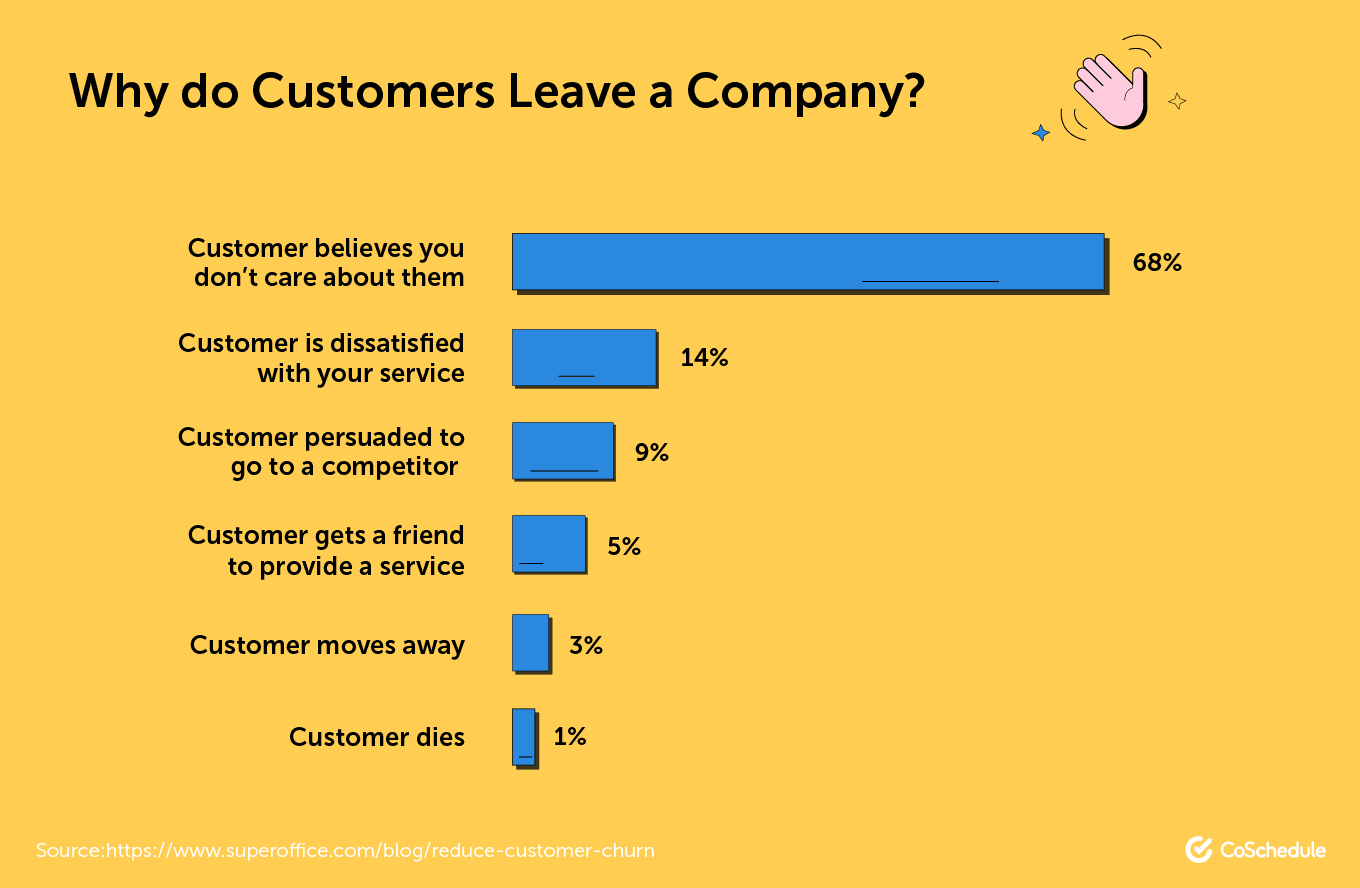 Image Source: Super Office
Bottom line: Show off your quality customer service by offering an apology and then respectfully providing a solution to your negative commenter’s issue in your response. It’s also wise to identify the commenter’s complaint persona and address their comment accordingly.
On the topic of tailoring your response, our next tip focuses on personalization.
Image Source: Super Office
Bottom line: Show off your quality customer service by offering an apology and then respectfully providing a solution to your negative commenter’s issue in your response. It’s also wise to identify the commenter’s complaint persona and address their comment accordingly.
On the topic of tailoring your response, our next tip focuses on personalization.
#3. Personalize Your Response
Our final way for you to respond to your negative comments on social media to boost your sales is to use personalization. As simple as addressing someone by first name may seem, personalize as often as you can because this practice carries quite a bit of weight. 63% of consumers stop buying from brands that provide poorly executed personalization. Plus, 87% of consumers say that personally relevant content influences how they feel about a brand in a positive way. So, make it a point to address your unsatisfied commenter by their first name and sign off using your (or your team member’s) first name. Beyond that, use your response as an opportunity to solve your audience’s specific problem and offer an individualized solution, like in this Nordstrom example, where the customer, Liz, left a negative comment on their Facebook page about having an issue with their site’s load time.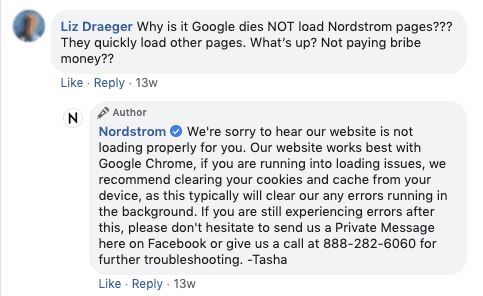 Image Source: FacebookAs you can see, Nordstrom’s team member apologized for the inconvenience, then provided specific detail about troubleshooting the load time. Once Liz’s issue was resolved (quickly, of course), she likely continued on with her plan of purchasing from their site.
Another way to personalize your audience’s experience is to actually sound like a human in your response.
Why? According to a Genesys survey, not only do 63% of consumers get annoyed with generic messages, but the most important aspect of customer support is “human service”.
Image Source: FacebookAs you can see, Nordstrom’s team member apologized for the inconvenience, then provided specific detail about troubleshooting the load time. Once Liz’s issue was resolved (quickly, of course), she likely continued on with her plan of purchasing from their site.
Another way to personalize your audience’s experience is to actually sound like a human in your response.
Why? According to a Genesys survey, not only do 63% of consumers get annoyed with generic messages, but the most important aspect of customer support is “human service”.
 Image Source: Groove HQ
One way to sound more human is to -- after acknowledging your negative commenter’s perspective and apologizing if necessary -- describe what you’re doing on your end to solve their problem, like in this Zappos tweet explaining the team’s effort.
Image Source: Groove HQ
One way to sound more human is to -- after acknowledging your negative commenter’s perspective and apologizing if necessary -- describe what you’re doing on your end to solve their problem, like in this Zappos tweet explaining the team’s effort.
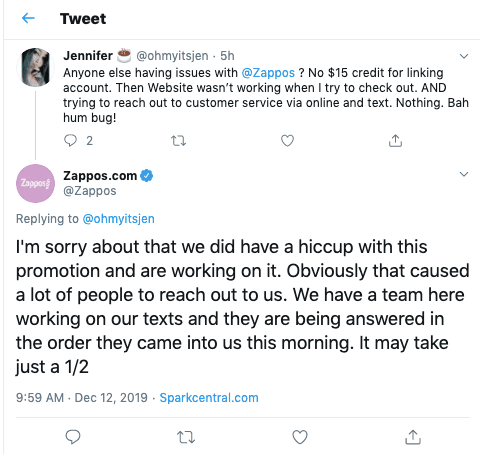 Image Source: Twitter
That way, your commenters can visualize what you’re personally working toward on your end, which makes the exchange seem more prioritized, customized, and real.
And if you can solve their problems by offering one of your paid solutions, even better. The gist is to empathize with their concerns and focus on solving their issues.
Another tip for sounding human is to consider the tone in your response. Aim for a sweet spot in your tone that’s friendly, positive, and professional, but not overly enthusiastic.
Image Source: Twitter
That way, your commenters can visualize what you’re personally working toward on your end, which makes the exchange seem more prioritized, customized, and real.
And if you can solve their problems by offering one of your paid solutions, even better. The gist is to empathize with their concerns and focus on solving their issues.
Another tip for sounding human is to consider the tone in your response. Aim for a sweet spot in your tone that’s friendly, positive, and professional, but not overly enthusiastic.
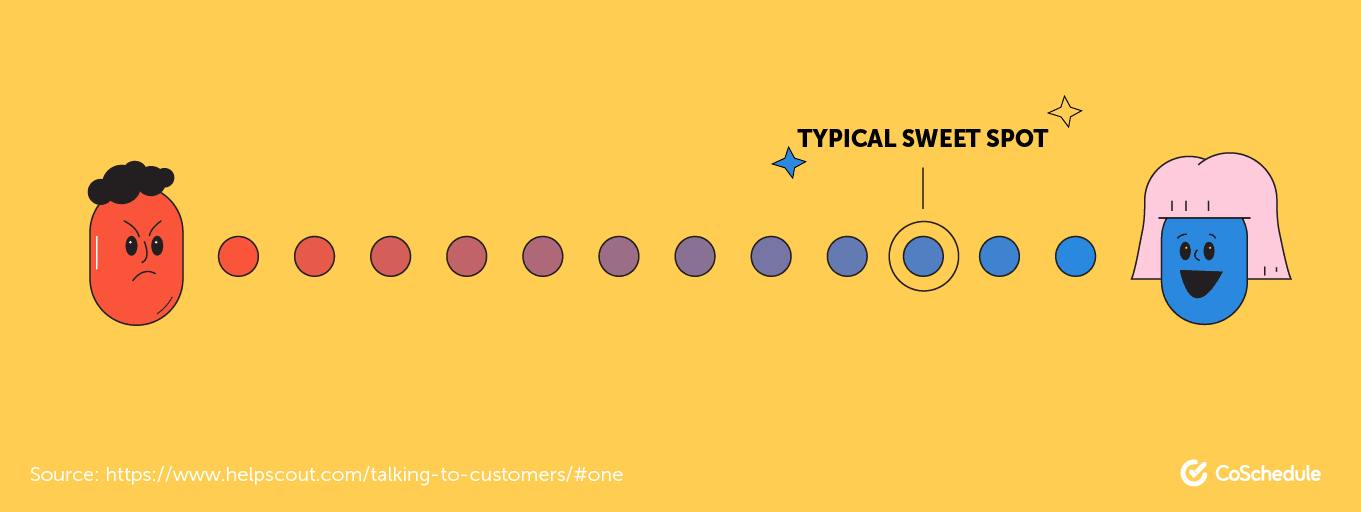 Image Source: Help Scout
You can take personalization a step further by mirroring specific pieces of your commenter’s language in your response, like in this other Zappos tweet that references the same word, “bamboozled,” that the customer used.
Image Source: Help Scout
You can take personalization a step further by mirroring specific pieces of your commenter’s language in your response, like in this other Zappos tweet that references the same word, “bamboozled,” that the customer used.
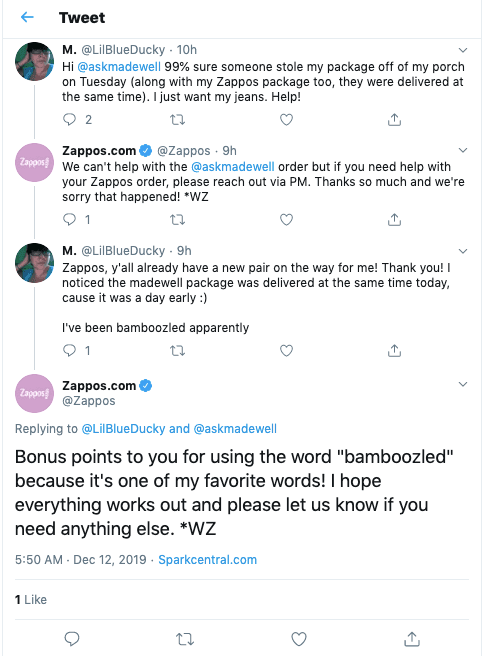 Image Source: Twitter
Naturally, you should stay away from mirroring frustrated tones and angry words from disgruntled commenters. But you can still pick up on certain nuances in their language and use it as an opportunity to personalize your response.
All in all, personalizing your responses to negative comments on social media can flip the unsatisfactory customer experience on its head, turning them into positive sentiments and future purchases.
Image Source: Twitter
Naturally, you should stay away from mirroring frustrated tones and angry words from disgruntled commenters. But you can still pick up on certain nuances in their language and use it as an opportunity to personalize your response.
All in all, personalizing your responses to negative comments on social media can flip the unsatisfactory customer experience on its head, turning them into positive sentiments and future purchases.
Time to Turn Your Negative Comments on Social Media Into Sales Opportunities
Whether you’re an entrepreneur selling an online course or an enterprise offering a SAAS product, you’re bound to receive negative comments on social media in the coming months and years. Don’t worry, though, there’s a way to use them to your advantage and add to your bottom line. Three ways, in fact. In sum:- Respond to negative comments on social ASAP. The sooner, the better for converting those negative comments into sales.
- Exemplify your high level of customer service in your response by apologizing, empathizing with your commenter, and tailoring your response to match their complaint persona.
- Personalize your responses to show your dissatisfied commenter that you’re giving them extra attention and working toward solving their specific issue.
